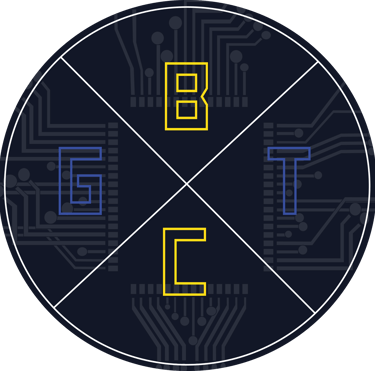
Malware Attacks: A Growing Threat to the Web3 Ecosystem
What are Malware Attacks in the Web3 Ecosystem?
CRYPTOTHOUGHT LEADERCOMMUNITYBLOCKCHAINNFTMALWARE
Beware the malware, it creeps and hides,
Ruining files and causing fright
Be smart and use antivirus software,
And always be aware of links you dare
Keep your computer safe, free from the scare!


What are Malware Attacks in the Web3 Ecosystem?
Malware attacks in the Web3 ecosystem are malicious software programs or scripts that are designed to target and exploit vulnerabilities in blockchain systems and networks. These attacks can take many forms, including phishing scams, malicious smart contracts, infected nodes and more, and they can cause harm by stealing sensitive information, manipulating transactions, or compromising the overall security of the network.
Phishing Scams
Phishing scams, for example, are a common type of malware attack in the Web3 ecosystem. These attacks are usually carried out through social engineering techniques, such as sending fake messages or emails that ask users to enter their private keys or seed phrases. Once the attacker has obtained this sensitive information, they can use it to access the user's assets and steal their cryptocurrency.
Malicious Smart Contracts
Malicious smart contracts are another type of malware attack that is becoming increasingly common in the Web3 ecosystem. These contracts are self-executing programs that are used to manage transactions and assets in a decentralized manner. However, if these contracts are not properly designed and tested, they can be vulnerable to malware attacks, as attackers can exploit these vulnerabilities to steal or manipulate data.
Infected Nodes
Infected nodes are another type of malware attack that can have a widespread impact on the Web3 ecosystem. In this type of attack, a malicious node infects the network with malware, which can then spread to other nodes and compromise the overall security of the network. This can have serious consequences for the stability and reliability of the Web3 platform, as well as the privacy and security of users' data.
The Web3 ecosystem, also known as the decentralized web or blockchain, is a new and innovative platform that promises to revolutionize the way we store, share and access information and assets online.
With its decentralized architecture and cryptographic security measures, the Web3 platform offers many advantages over traditional web systems, such as increased security, transparency and censorship resistance.
However, despite these benefits, the Web3 ecosystem is not immune to the threat of malware attacks, which can have serious consequences for users and the ecosystem as a whole.
Why are Malware Attacks a Concern in the Web3 Ecosystem?
There are several reasons why malware attacks are a growing concern in the Web3 ecosystem.
Firstly, the decentralized nature of the platform means that any vulnerability in the network can have a widespread impact, as attackers can potentially compromise multiple nodes and gain access to sensitive information.
Secondly, the increasing use of smart contracts in the Web3 ecosystem is also making it more vulnerable to malware attacks, as these contracts can be vulnerable to exploits if they are not properly designed and tested.
Inaddition, the Web3 ecosystem is still in its early stages of development, and many of the security measures that are used in traditional web systems are still being developed and refined. This means that there are still many vulnerabilities and loopholes in the Web3 platform that can be exploited by malicious actors.
Finally, the lack of a central authority in the web3 ecosystem means that there is no single entity that is responsible for security and protection. This means that users must take responsibility for their own security and be proactive in protecting themselves from malware attacks.
How can Users Protect themselves from Malware Attacks in the Web3 Ecosystem?
Despite the growing threat of malware attacks in the Web3 ecosystem, there are several steps that users can take to protect themselves and their assets.
Some of these steps include:
USE REPUTABLE WALLETS & EXCHANGES:
Only use reputable wallets and exchanges that have been audited and have a good security track record. This can help reduce the risk of phishing scams and other types of attacks.
VERIFY SMART CONTRACTS:
Before using or interacting with any smart contract, it is important to verify its source and code to ensure that it is secure and free from malware. This can be done by conducting a thorough review of the contract code and seeking the opinion of trusted experts in the field.
STORE PRIVATE KEYS AND SEED PHRASES:
It is critical to store private keys and seed phrases securely, as these are the keys to accessing and managing assets in the Web3 ecosystem. This can be done by using hardware wallets, encrypted storage systems, or other secure methods of storage.
STAY INFORMED & EDUCATED:
It is important to stay informed and educated about the latest threats and trends in the web3 ecosystem, as well as best practices for protecting against malware attacks. This can be done by regularly reading news and articles on the topic, as well as participating in online forums and communities.
USE SECURITY TOOLS & SOFTWARE:
There are many security tools and software available that can help protect against malware attacks in the web3 ecosystem.
These can include antivirus software, firewalls, intrusion detection systems, and more.
Conclusion
Malware attacks are a growing concern in the Web3 ecosystem, as they can have serious consequences for users and the ecosystem as a whole.
Despite this, there are many steps that users can take to protect themselves and their assets from these attacks. By using reputable wallets and exchanges, verifying smart contracts, storing private keys and seed phrases securely, staying informed and educated, and using security tools and software, users can significantly reduce their risk of falling victim to malware attacks in the Web3 ecosystem.
Click here for a free gasless mint of: Beware The Malware
(limit 100)







